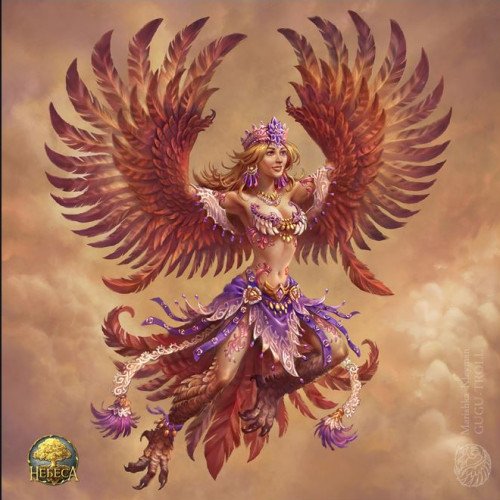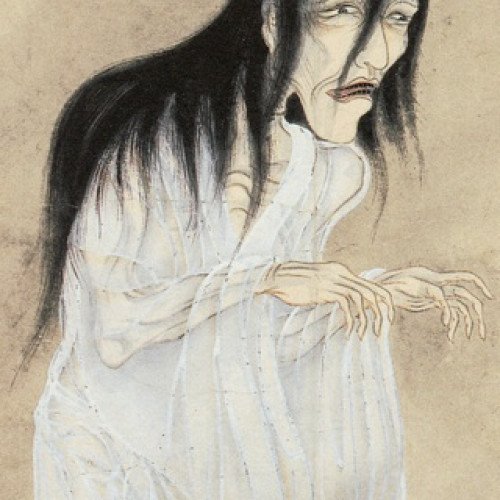Alkonost VS Ghost

Alkonost
The Alkonost is, according to Russian mythos and folklore, a woman-headed bird. It makes amazingly beautiful sounds, and those who hear these sounds forget everything they know and want nothing more ever again. She lives in the underworld with her counterpart, the Sirin. The Alkonost lays her eggs on a beach and then rolls them into the sea. When the Alkonost's eggs hatch, a thunderstorm sets in and the sea becomes so rough that it becomes impossible to traverse. She is also the sister of other birds from Slavic mythology, such as Rarog and Stratim.According to folk tales, at the morning of the Apple Feast of the Saviour day, Sirin flies into the apple orchard and cries sadly. In the afternoon, the Alkonost flies to this place, beginning to rejoice and laugh. Alkonost brushes dew from her wings, granting healing powers to all fruits on the tree she is sitting on.The name of the Alkonost came from a Greek demigoddess whose name was Alcyone. In Greek mythology, Alcyone was transformed by the gods into a kingfisher.Alkonost is more likely an individual character, as was noted in some legends about this bird.
Statistics for this Xoptio

Ghost
In folklore, a ghost is the soul or spirit of a dead person or animal that can appear to the living. In ghostlore, descriptions of ghosts vary widely from an invisible presence to translucent or barely visible wispy shapes, to realistic, lifelike forms. The deliberate attempt to contact the spirit of a deceased person is known as necromancy, or in spiritism as a séance. Other terms associated with it are apparition, haunt, phantom, poltergeist, shade, specter or spectre, spirit, spook, and wraith. The belief in the existence of an afterlife, as well as manifestations of the spirits of the dead, is widespread, dating back to animism or ancestor worship in pre-literate cultures. Certain religious practices—funeral rites, exorcisms, and some practices of spiritualism and ritual magic—are specifically designed to rest the spirits of the dead. Ghosts are generally described as solitary, human-like essences, though stories of ghostly armies and the ghosts of animals rather than humans have also been recounted. They are believed to haunt particular locations, objects, or people they were associated with in life. According to a 2009 study by the Pew Research Center, 18% of Americans say they have seen a ghost.The overwhelming consensus of science is that there is no proof that ghosts exist. Their existence is impossible to falsify, and ghost hunting has been classified as pseudoscience. Despite centuries of investigation, there is no scientific evidence that any location is inhabited by spirits of the dead. Historically, certain toxic and psychoactive plants (such as datura and hyoscyamus niger), whose use has long been associated with necromancy and the underworld, have been shown to contain anticholinergic compounds that are pharmacologically linked to dementia (specifically DLB) as well as histological patterns of neurodegeneration. Recent research has indicated that ghost sightings may be related to degenerative brain diseases such as Alzheimer's disease. Common prescription medication and over-the-counter drugs (such as sleep aids) may also, in rare instances, cause ghost-like hallucinations, particularly zolpidem and diphenhydramine. Older reports linked carbon monoxide poisoning to ghost-like hallucinations.In folklore studies, ghosts fall within the motif index designation E200-E599 ("Ghosts and other revenants").